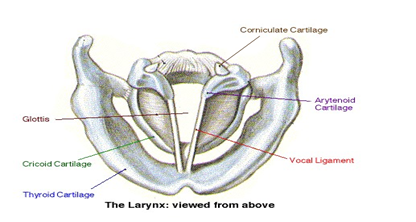NCERT Solutions for Class 8 Science Chapter 10 Sound help students to clear all their doubts. These solutions provide you with the answers to all the questions given in the NCERT textbook. CBSE Class 8 Science Chapter 10 Solutions is prepared by expert teachers as per the latest CBSE syllabus and guidelines.
Solving NCERT Solutions will help you to understand the concepts related to Sound NCERT Solutions for Class 8 Science Chapter 10 contains an in-depth explanation of each question of NCERT Science textbook. These solutions cover important concepts in different patterns like MCQs and short answer questions, worksheets and more and help you top score good marks in the exam.
Class 8 Science Sound Questions and Answers
Exercise Questions
Choose the correct answer:
Question 1: Sound can travel through
(a) gases only
(b) solids only
(c) liquids only
(d) solids, liquids and gases.
Answer: (d) solids, liquids and gases.
Question 2: Which of the following voices is likely to have minimum frequency?
(a) Baby girl
(b) Baby boy
(c) A man
(d) A woman
Answer 2: (c) A man
Frequency of a sound is directly proportional to its pitch and inversely proportional to its amplitude. The voice of an adult man is of lower pitch and high amplitude in comparison to the voices of a baby boy, a baby girl and a woman. The voice of a baby girl has highest pitch among this group.
Question 3: In the following statements, tick T against those which are true, and F against those which are false:
(a) Sound cannot travel in vacuum – True
(b) The number of oscillations per second of a vibrating object is called its time period – False
(c) If the amplitude of vibration is large, sound is feeble – False
(d) For human ears, the audible range is 20 Hz to 20,000 Hz – True
(e) The lower the frequency of vibration, the higher is the pitch – False
(f) Unwanted or unpleasant sound is termed as music – False
(g) Noise pollution may cause partial hearing impairment – True
Question 4: Fill in the blanks with suitable words.
(a) Time taken by an object to complete one oscillation is called __________.
(b) Loudness is determined by the __________ of vibration.
(c) The unit of frequency is __________
(d) Unwanted sound is called __________ .
(e) Shrillness of a sound is determined by the __________ of vibration.
Answer: (a) Time taken by an object to complete one oscillation is called time period.
(b) Loudness is determined by the amplitude of vibration.
(c) The unit of frequency is Hertz .
(d) Unwanted sound is called Noise.
(e) Shrillness of a sound is determined by the frequency of vibration.
Question 5: A pendulum oscillates 40 times in 4 seconds. Find its time period and frequency.
Answer 5: Here no. of oscillation = 40
Time taken = 4 s

Question 6: The sound from a mosquito is produced when it vibrates its wings at an average rate of 500 vibrations per second. What is the time period of the vibration?

Question 7: Identify the part which vibrates to produce sound in the following instruments:
(a) Dholak
(b) Sitar
(c) Flute
Answer: Dholak: Dholak has stretched membranes which vibrate to produce sound.
Sitar: In sitar, the stretched strings, when vibrate, they produce sound.
Flute: Flute is a wind musical instrument which uses air column to produce sound.
Question 8: What is the difference between noise and music? Can music become noise sometimes?
Answer 8: Music is a sound which produces a pleasing sensation while noise is an unwanted and unpleasant sound. Music is produced by nature, musical instruments etc. Noise is produced by horns of vehicles, by machines etc.
Music can become noise when we play it at very high volume or too many music are being played at the same time with unpleasant loudness.
Question 9: List sources of noise pollution in your surroundings.
Answer: Major causes of noise pollution are sounds of vehicles, explosions including bursting of crackers, machines, loudspeakers etc. Sources in the home may lead to noise pollution. Television and transistor radio at high volumes, some kitchen appliances, desert coolers, air conditioners, all contribute to noise pollution.
Question 10: Explain in what way noise pollution is harmful to humans.
Answer: Lack of sleep, hypertension (high blood pressure), anxiety and many more health disorders may be caused by noise pollution. A person who is exposed to a loud sound continuously may get temporary or even permanent impairment of hearing.
Question 11: Your parents are going to buy a house. They have been offered one on the roadside and another three lanes away from the roadside. Which house would you suggest your parents should buy? Explain your answer.
Answer: Closer to the roadside, larger the noise pollution. So, I would suggest a house which is three lanes away from the roadside because the pollution level (both air and noise pollution) is somewhat less there.
Question 12: Sketch larynx and explain its function in your own words.
Answer:

In humans, the sound is produced by the voice box or the larynx. Two vocal cords are stretched across the voice box or larynx in such a way that it leaves a narrow slit between them for the passage of air. When the lungs force air through the slit, the vocal cords vibrate, producing sound. Muscles attached to the vocal cords can make the cords tight or loose. When the vocal cords are tight and thin, the type or quality of voice is different from that when they are loose and thick.
Question 13: Lightning and thunder take place in the sky at the same time and at the same distance from us. Lightning is seen earlier and thunder is heard later. Can you explain?
Answer: Speed of sound is 330 m/s and speed of light is 300,000,000 m/s. Light travels much faster than sound that is why lightning is seen earlier and thunder is heard.